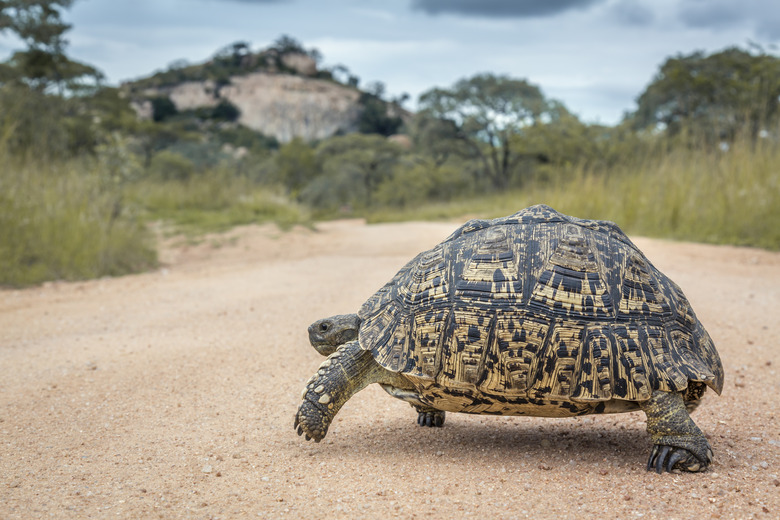Ideas For Science Fair Projects About Turtles
The hardest part of a science fair is deciding on a project that suits you. Every year the old standby tornado in a jar and solar system projects are displayed; but why not get creative and choose something no one else will do? If you enjoy animals, try doing a project about turtles. Turtles are easy to find as pets and in the wild and also make great subjects.
Compare Turtle Behaviors
Compare Turtle Behaviors
Research and make a list of different species of turtles. If you already have pet turtles or turtles in your yard, use these species. Ask friends who have pet turtles or turtles near their homes if you can use their turtles. You only need two species, but use more if you can or want to. Observe these turtles at different times of the day. Make sure to observe them at the same times each day (for example, each morning, afternoon, and night). Make notes about what each turtle is doing at these times. When do they like to eat, sleep? When are they more active? When do they prefer day/light, evening/shady, or nighttime/dark? Record your observations and compare the behaviors between the different species. How are they alike? How are they different?
Is It a Turtle or a Tortoise?
Is It a Turtle or a Tortoise?
Research tortoises and turtles. Gather information regarding their habitat, feeding habits, sleeping habits, hibernation, breeding, offspring, where can you find them in the United States, and so forth. Find pictures of turtles and tortoises and note the likenesses and differences in appearance. Next, examine live turtles and tortoises. Again, observe likenesses and differences in appearance. If you are able to observe them for several days, observe the differences in how they live, eat, and sleep and in their habitats. Record all of your observations, and note how they assist in telling the difference between a turtle and a tortoise.
What Color Do Turtles Prefer?
What Color Do Turtles Prefer?
First, get your pet (or, with permission, someone else's pet) turtle. Make sure it is in its usual, comfortable habitat (tank with water, heat, light, and so forth). Provide the turtle with a variety of different foods that appeal to and are safe for it. Make sure that each food is a different, vibrant color (tomato, carrot, spinach, apple, grape, banana, or whatever you choose to use). Record which food the turtle goes to first. Repeat this procedure every day or every other day over the course of several days. Each time, record which food the turtle goes to first. Make notes about which foods the turtle is least interested in and which ones are the second favorite. Is the turtle consistent in his choices? If so, the turtle may have a favorite color. If not, color may not matter to turtles. How does this affect the way a turtle lives?
Cite This Article
MLA
Conrad, Jamie. "Ideas For Science Fair Projects About Turtles" sciencing.com, https://www.sciencing.com/ideas-science-fair-projects-turtles-5951653/. 22 November 2019.
APA
Conrad, Jamie. (2019, November 22). Ideas For Science Fair Projects About Turtles. sciencing.com. Retrieved from https://www.sciencing.com/ideas-science-fair-projects-turtles-5951653/
Chicago
Conrad, Jamie. Ideas For Science Fair Projects About Turtles last modified August 30, 2022. https://www.sciencing.com/ideas-science-fair-projects-turtles-5951653/
